I purchased (2) 15-lite interior doors, 30″ wide, and just put them up. I thought it wouldn’t be that bad to make the jamb, but this has been such a PITA.
I didn’t store them right, now when both doors are closed, the bottom of one bows out so both doors don’t align on the bottom. Is it possible to bend the door back or is the something that cannot be fixed.
I knew I should have just bought the prehung doors.
Thanks.
Brad
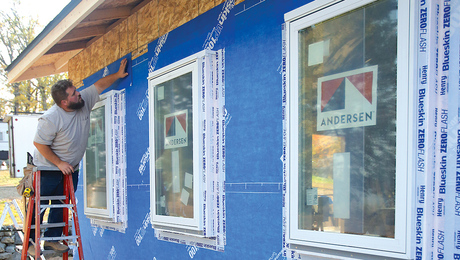
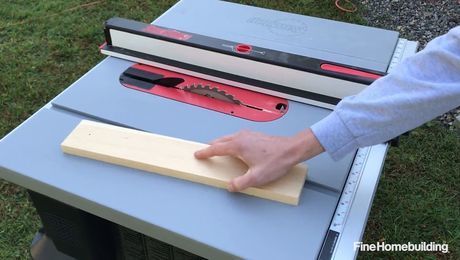

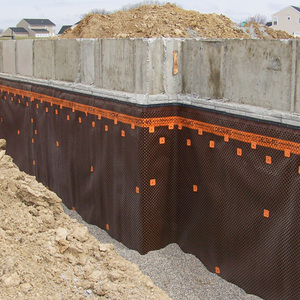
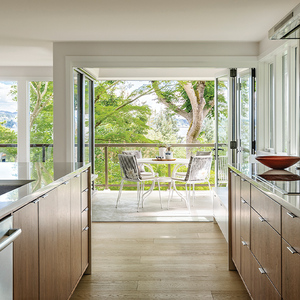
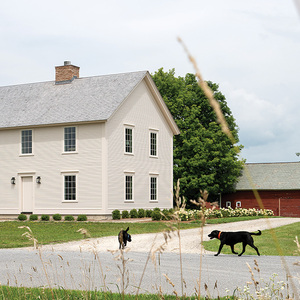













Replies
It may not be the door. On pairs in particular, any discrepancy in the two side jambs will result in the doors not meeting correctly. On pairs,if either jamb is out of plumb--even slightly--the resulting problem where they meet will be doubled.
First check for plumb and level and make any corrections necessary. If you DID store the door incorrectly, then it's possible it will return to its' true shape after it gets acclimated to the prevailing humidity of your home.
I checked last night, the jambs are plumb - how do I go about straightening a door?
they may be plumb but are they on the same plane as each other???
Life is not a journey to the grave with the intention of arriving safely in a pretty and well preserved body, but rather to skid in broadside, thoroughly used up, totally worn out, and loudly proclaiming<!----><!----><!---->
WOW!!! What a Ride!Forget the primal scream, just ROAR!!!
One way to check to see if both jambs are in alignment with each other is to use string. You set small nails at each corner of the jam. You form an X in the middle with the string. If the jambs are in a alignment the string should just touch in the middle.
If the jambs are in alignment or you don't want to move them you can cheat the hinges over. You can cheat the hinges on both sides and on the jamb and door. If you spread out the moving of the hinges between all those places no one is ever going to see it.
The easiest way to move the hinge is by moving it more into the wood. That way you don't have to fill the void left by moving it away from the wood. Is that clear? One way would leave a gap and the other wouldn't. If it painted you can fill the gap but it is another step.
Spring the door back the opposite direction.
Say the bottom is out by 1/4" Put a stop on the floor so it won't move, now wedge out the top by ? more then the 1/4" and let stand for a day. Re check repeat as necessary.
First, if it is accurate that you didn't "store them right", then the doors may move back to the original "flat" in time (6 months). The "store them right" is a valid warranty consideration, but almost no one stores them right, and so is one of the first things Bigdoorco looks for in canceling a warranty.
Secondly, string the opening so you know if the jambs represent a flat plane. Whether they do or not, matters little, but helps inform your next steps.
You can easily move one jamb leg in and the other one out to cancel the mis-meet. 5 pound hammer and soft wood block are the tools of choice here. You may then reset a fastener or two just to hold things where you want them.
I would only move hinges if the above doesn't work. Think of the three hinges on each door as taking the top and bottom lose, and the center being a pivot. As the top hinge knuckle moves away from the wall, the bottom of the door moves in. Sort of contrary to what you might first think.
Good luck,
Dave S
http://www.acornwoodworks.com
Okay, the jambs are plumb, square, and level. If in fact you stored the doors improperly and the result is a twisted door--this can happen if you lean the door up against the wall with only ONE top corner touching the wall--then the door will tend to straighten itself out as it gets acclimated to your homes' prevailing conditions. It could take a few months.
In any case, if you suspect a flawed door, by all means formally report it to the manufacturer for warranty purposes. They won't do anything about it in the near future because they will tell you to let it get acclimated to your climate--up to three months. And if you mention that you may have stored it improperly, they will surely void the warranty.
"How do you spell illiterate?"
Edited 3/4/2008 10:36 am by doorboy
Modern Mythology - I have heard the two previous cause and effect lines of reasoning often in the last 35 years. I have come to believe neither are true, but only after careful observation and analysis.The "door leaned on the wall with only one corner touching" sounds legit, until you try it. Most of us that work with doors try it by pushing a door into a frame, and forcing it to latch. Whether the door or frame is out of flat is immaterial for this thought problem. You can wait a minute, a day, a week or a year, and the door springs right back to where it was. Go ahead, set up a situation where you bend it back the other way by 100%. Wait the required day, week or year. Then release it. It will go right back to where it was - if not immediately, within an hour or two. The tell is that if it (door leaned on one corner) were true, then all the "warped" (door and frame not coplaner) doors out there would straighten up in a day or two, once they were latched. But, they don't. The science would say that the only way the door can be "bent" to correct it would be if the joints were broken. As one who has tried both methods to make a door fit (and a few more), I can tell you that it is not only fruitless, but the mark of a truly desperate man. I have been there. Dave S
http://www.acornwoodworks.com
(1)Are you saying that a door that is assembled true and straight, then develops a twist through improper storage, will NOT tend to return to it's true and straight condition? or (2)are you saying that a true and straight door improperly stored will not develop a twist or bow?
If it's the first example, then why would all of the manufacturers I know of require the door to be hung for a period of months before a warp or twist can be determined?
If it's the second example, then why would all manufacturers that I know of recommend storing doors in a flat-or horizontal-position?"How do you spell illiterate?"
By the way, Dave, you may have misunderstood my post about "leaning the door against a wall"
I did not offer that as a way to solve the problem for the door to fit better--in fact I know that WON'T work. I offered it as a possible example of improper storage that COULD lead to a twist in the door. Nor do I believe that you can change the shape of a door by wedging one corner and forcing the door shut.
I believe these facts to be true--a straight and true door will seek to return to that shape once stabilized, and a warped, twisted, or bowed door will seek to return to THAT shape once stabilized."How do you spell illiterate?"
A door that is true and straight and leaned against a wall with one corner touching will not develop a twist. It may have some twist as a result of the storage, but that will disappear shortly- within a day or two. Also, if it is forced into a twist (say, stacked on an unlevel floor with weight) it will not develop a twist, except for again, short term. If a door is made correctly (or incorrectly [not flat] for the sake of the discussion), it will want to stay flat, despite what you or I do to the contrary. Heat and moisture (or extreme absence of) will change that, but not always in predictable ways. We are assuming several other things that may come into play in the real world:
That the wood is properly dried and joined, with the glues fully cured.
That the relative humidity in the house is somewhat stable and normal - 35% being the ideal here in the Midwest.
That there is no jet blast heater on one side of the door, or that it is sitting in water (obvious problem-makers, but worth mentioning since I have seen both happen several times). All manufacturers recommend storing a door flat and horizontal for at least two reasons: One, it is difficult to do properly and takes up space, so is rarely done on the jobsite, therefore excluding the door from warranty coverage, and two, it is difficult to explain how to lean a door up against a wall with a block at top center so the door contacts the world at 3 points, with air circulation all around it. The "wait 6 months" strategy is somewhat valid, since that predicts that the building's normal heating and cooling cycles will bring the environment back to a level that the door will find acceptable. It is likely that a homeowner may lose track of this requirement, and never come back to make the claim at 6 months. And then the claim may have to be made by the builder, with original invoice copies, shipping docs, etc. Just like that $6.00 rebate on a printer cartridge - 80% won't ever get it. Every door maker I have worked for instructed me to write a warranty that would "have no claims." This is the same standard warranty that every door company has. "Finish behind the hinges" is an exclusion for warped doors?? Yeah, right. Pardon my cynicism, but the idea is to have no claims. We agree on cause and effect. I hope to dispel some of the myth around wood doors. The non-wood door industry loves to play on the unfortunate mythology around wood doors, and there is not enough common sense experience in the trades today to counter such myth-mongering, except by those few of us that do have real world experience, and operate on observation and science. It is a wonder we can feed ourselves with the rampant rise of belief over reality we see in our otherwise advanced world. Dave S
Don't feel bad, most likely the doors were like that when you bought them, or where at least headed there regardless of what you were to do. To save money many doors are made of crapp.
In your case I'd ask for replacement doors.
If you have to make the door work, set the jamb with the legs a little out of whack until the doors line up correctly. Most people won't notice if one leg is out 1/16" and the other in the same amount. You can also adjust the hinges so each door is proud of the jamb 1/32" on one hinge without too much concern. That will give you 3/16" to work witih all together, but the door may open or close on it's own--not good.
Best of luck
Beer was created so carpenters wouldn't rule the world.